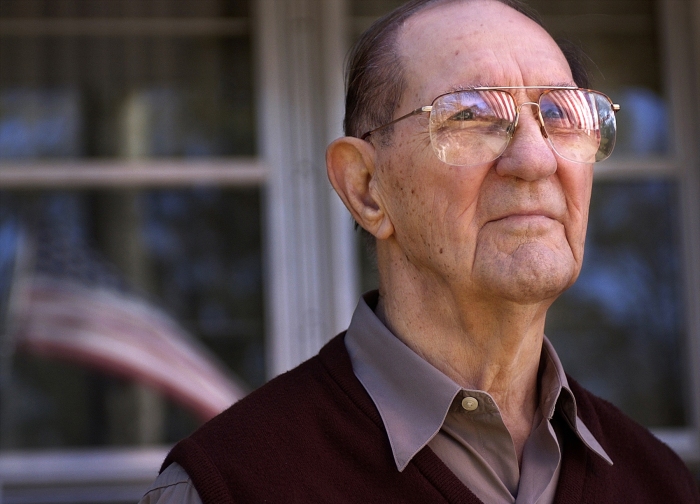 Marion Matherne holds photos of himself (lower right) and his six brothers, all of whom served in the military in World War II. (Photo by Travis Spradling, used by permission of The Advocate, Baton Rouge, Louisiana.)
Marion Matherne holds photos of himself (lower right) and his six brothers, all of whom served in the military in World War II. (Photo by Travis Spradling, used by permission of The Advocate, Baton Rouge, Louisiana.)
By George Morris
Marion Matherne doesn’t claim to be a World War II hero. As far as he knows, no one in his family earned that individual distinction.
As a group, however, the Matherne siblings were remarkable.
Matherne, a Baton Rouge resident for almost 60 years, said he and six of his brothers served in the American military during World War II. Seven siblings serving wasn’t a record – one Texas family claimed nine – but it was a real rarity.
 Tom Hollimon (Photo by Arthur D. Lauck, used by permission of The Advocate, Baton Rouge, Louisiana)
Tom Hollimon (Photo by Arthur D. Lauck, used by permission of The Advocate, Baton Rouge, Louisiana)
 A B-25 launches from the USS Hornet on April 18, 1942, as part of the Doolittle Raid on Japan.
A B-25 launches from the USS Hornet on April 18, 1942, as part of the Doolittle Raid on Japan. The USS Kidd is now a war memorial and naval museum in Baton Rouge, Louisiana.
The USS Kidd is now a war memorial and naval museum in Baton Rouge, Louisiana.